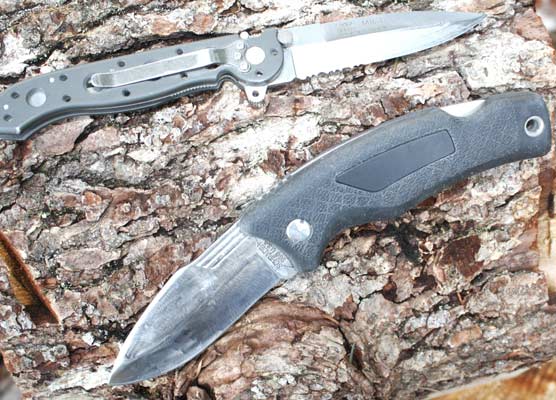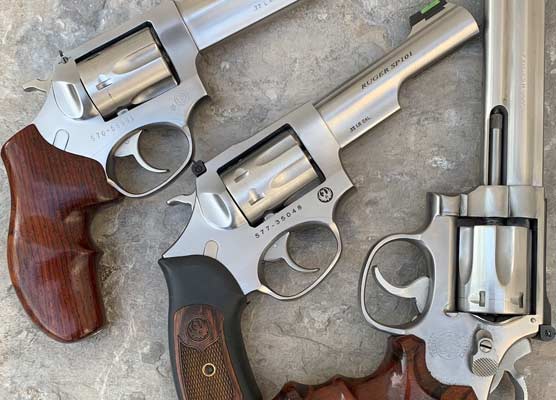Trigger Control Refresher Course
Squeeze Smarter, Shoot Straighter
Shooting a handgun is a diminishing skill. To continue shooting accurately, one must shoot regularly. Even dry firing helps maintain some modem of recall if live fire is impossible.
Shooting Triangle
Shooting accurately can be broken down into three stages. The first is sight alignment. Sight alignment entails focusing on the front sight, by always keeping its image in sharp focus. Next entails centering the front sight into the rear sight notch, while keeping the tops of both sights level to each other for complete sight alignment.
Bringing the top of the front sight to your target while maintaining sight alignment is called sight picture. This is the second stage. Maintaining sight picture involves keeping the top of the front sight on target as you start your trigger press. The sights will wobble some, but this is natural. If you didn’t wobble, you’d be dead. So, relax and don’t fight it. Keep focusing on the front sight, keeping it sharp, as you start your trigger press. Your rear sight and target should be slightly out of focus, as it’s impossible to keep three objects in different sight planes in focus at once.
This is why the mantra for accurate shooting is, “Front sight, pressss …” By keeping your front sight on target, or near your target when the trigger breaks, you’ll either hit or be very close to what you’re aiming at. The more you practice the better you’ll be.
The trigger press is the third stage. Many call the trigger press pulling the trigger, but good shooters never pull or yank their trigger. Maintaining a steady press while increasing pressure lightly and smoothly until the trigger starts moving is what you’re striving for. Remember, while doing your trigger press, you’re still maintaining your sight picture.
The Great Debate
There’s a lot of debate as to what’s more important to shooting accurately: trigger press or sight picture. I’ll split the difference and say they’re both equally important. If you can’t maintain sight picture you will not hit what you’re aiming at. If your trigger press is bad, making you pull your sights off target, you won’t hit what you’re aiming at. The two are conjoined like Siamese twins, one can’t go without the other for accurate shooting.
Trigger Transference
I noticed it years ago when my shooting club was having a Top Gun Match consisting of shooting rifle, handgun and shotgun. I don’t remember the exact courses of fire, just that scores form all three shooting disciplines would be tallied for a grand total. Naturally, the highest totaled score tally would be deemed “Top Gun.”
Surprisingly, those doing particularly well in one of the shooting phases didn’t always do nearly as well in the other categories.
All the “best shots” I know have something in common. That is, they’ve all mastered shooting double-action revolvers. To be considered a “best shot” means you can shoot a double-action revolver as it was intended — double action, no cheating by cocking the hammer and shooting single action. It’s that long trigger press of a double-action revolver that holds the key for trigger transference.
Successful trigger transference simply means being skilled at any type of shooting, be it shotgun, rifle or handgun, or be it semi-auto, double action or single action. A good trigger pull is paramount to accurate shooting. And not all trigger pulls are the same.
This was observed when watching an acquaintance shooting his .300 Winchester Magnum a few years ago. While a champion shotgunner, he was a poor rifle shot. His trigger pull, while great for shotgunning didn’t transfer well to his rifle shooting skills. Shotgunners tend to slap the trigger, which is fine when discharging multiple projectiles in the form of birdshot, but it’s horrible technique when shooting a single projectile at a much further distance with any precision using a rifle. Distance exaggerates all bad habits when it comes to shooting.
Shooting Drills?
I was doing some volunteer work involving screwing a lot of drywall screws into soft wood. Using cordless drills, it took a little finesse to start the screw, sink it flush to the wood and then stopping before the soft wood split. Those having the manual dexterity to run the drill had no problems. Those who didn’t, struggled.
The strugglers tended to go from zero to 10,000 RPMs, either stripping the head or splitting the wood with every screw counter-sunk deeply into the split wood. Again, proper trigger control transferred to driving the screws tight and flush to the wood without splitting it.
Screwball Idea
Here’s a crazy thought, grab your hand drill and a screw or two and practice driving it slowly to a certain depth or sink it flush to the wood. Either way, the more control you have the more it will transfer to shooting. Lastly, try slowly pressing the trigger so the drill only rotates ¼ turn. Then try doing it so the jaws just barely move.
As crazy as it sounds, you’re strengthening and fine-tuning your trigger finger muscles while connecting your central nervous system to your trigger finger.
Timing
Shooting is a myriad of both fine and gross motor skills. Gross motor skills include gripping your gun while establishing a steady base (stance). Fine motor skills come into play when finding your trigger with your trigger finger, and NOT having the gun go off when doing so. A certain amount of sensitivity is needed. This is more applicable with single action guns with light triggers. Touching the trigger and then transitioning to a full trigger press is a complex process involving your brain, eyes and trigger finger working together harmoniously to make the bullet hit where we want it.
Ultimate Trigger Trainer
The humble .22 rimfire double-action revolver is the best gun for fine-tuning your trigger press for several reasons. It doesn’t matter what make, model or brand it is either. The heavier and rougher the trigger, the more you’ll learn from it. For once you’ve mastered a heavy, rough trigger, shooting a revolver with a lighter, smoother trigger will seem like child’s play.
The reason for using .22 rimfire for a trainer is simple. The ammo is still the cheapest way to shoot, aside from shooting someone else’s ammo. Sure, the days of $10 for a brick ammo are gone, but things are getting better from the shortage days and scalping prices from years ago.
Secondly, the low recoil of .22 rimfire allows the shooter to concentrate on the mechanics of sight alignment, sight picture and trigger press without being distracted from raucous recoil and muzzle blast. It keeps shooting fun without anticipating heavy recoil.
Rimfire Wrap
These are my thoughts on developing better trigger control by becoming a better double-action shooter. Once you’ve mastered, or even improved on your double action shooting, you’ll notice it’s easier shooting any of the other shooting disciplines. Just something to chew on to help improve your shooting.







